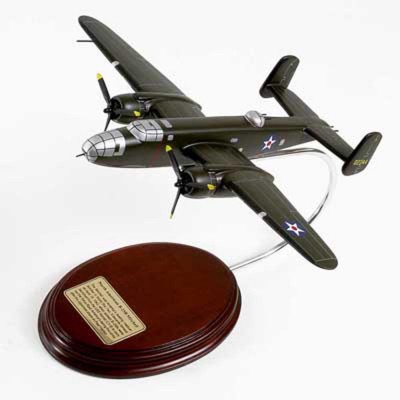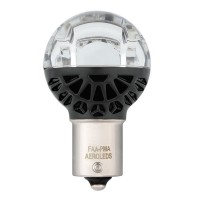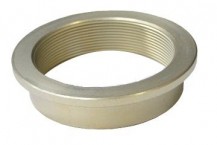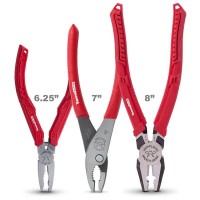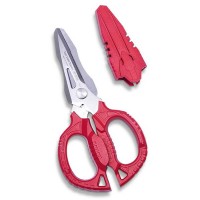Aircraft Spruce Canada
Brantford, ON Canada
Corona, CA | Peachtree City, GA
Chicago, IL | Wasilla, AK
B-25B Mitchell Model 1/65
MFR Model# AM07005
Overview
|
This high quality replica is handcrafted from mahogany and comes with a wooden base. Length is 10.75" and wingspan is 12.36". Scale is 1/65 This collectible B-25B represents the aircraft flown by Jimmy Doolittle on the famous Doolittle Raid on April 18, 1942. This detailed model B-25 shows the bomber that struck America’s first blows against Japan in World War II and offered an valuable morale boost to the nation. Painstakingly built from Philippine mahogany by our skilled craftsmen with a wealth of detail, this 1/65-scale model B-25B makes a great aviation gift for any pilot, enthusiast or history buff. The B-25 Mitchell was one of the most widely produced aircraft of World War II, serving in every theater in a variety of configurations. The twin-engine Mitchell made the first strikes against Japan during the famed Doolittle Raid in 1942; served in Europe, and became deadly ground attack aircraft when fitted with up to 14 forward-firing machine guns. Development of the B-25 began in the 1930s as an outgrowth of North American Aviation’s XB-21 project. The new aircraft, called NA-40 by the company, was evaluated by the Army Air Corps in 1939 and ordered into production as the B-25. The B-25 was an inch under 53 feet long, with a wingspan of 67 feet, 6 inches. Powered by two Wright 2600 Twin Cyclone engines developing 1,850 horsepower each, the B-25 had a maximum speed of 275 mph and a combat radius of 1,350 miles. Armament could include up to 6,000 pounds of bombs; eight 5-inch rockets; a torpedo, and forward firing machine guns or cannon. Versions of the B-25 fitted with up to 14 forward-firing .50-caliber machine guns proved devastating to Japanese shipping, and strafing and “parafrag” attacks proved valuable for attacking airfields. Maj. Paul “Pappy” Gunn developed many of the innovations that made the Mitchell a devastating attack aircraft, pioneering the strafing modifications, as well as skip-bombing techniques against shipping. Mitchells would come in at low-level, guns blazing, as pilots kicked rudder pedals to walk rounds along the waterline of Japanese ships and to suppress anti-aircraft fire. Crews would drop their delay-fused bombs before they roared just above their targets. The bombs would skip along the water, hit the ship and sink before detonating underwater, ripping open the bottoms. Almost 10,000 B-25s were produced, and the tough bombers served with many nations. Following World War II, many B-25s landed in long-term storage while others continued to be used as trainers, recon aircraft or in support roles. The last B-25 in the Air Force was retired in 1960. The most famous use of the B-25 was in 1942, when Lt. Col. Jimmy Doolittle led a force of 16 aircraft from the USS Hornet to attacks on cities in Japan. Select crews trained in Florida on short-field takeoff techniques before embarking on the Hornet in San Francisco on April 1, 1942. The Hornet and its task force met the USS Enterprise days later off Hawaii and the force, Task Force 16, headed for Japan. Doolittle planned to launch his raid 450 miles from the Japanese coast, with the B-25s flying on to bases in China. However, at 7:38 a.m. April 18, 1942, the force was spotted by a Japanese picket boat more than 600 miles from Japan. Doolittle and Hornet commander Marc Mitscher decided to launch the Army planes immediately. Doolittle – in the number one plane - had only 467 feet in which to take off. He launched safely, and the remaining 15 aircraft departed over the next hour. Flying low to avoid radar, Doolittle’s force attacked Tokyo, Yokosuka, Nagoya, Osaka and Kobe. No planes were lost over Japan, but fuel was running low in every ship. A tailwind helped the raiders reach China, although one crew headed for Russia. As night fell, weather worsened and the raiders were forced to bail out or crash land along the coast. Three raiders died in the crash of their aircraft or bailing out; eight were captured by the Japanese, with three eventually executed and one starving to death as a POW. The remaining raiders eventually made it back to Allied-controlled areas, and continued their service, with a number remaining in the China-Burma-India Theater. The crew that landed in Russia was interned before making an escape through Iran in 1943. Doolittle was awarded the Medal of Honor and promoted to brigadier general, and went on to command the Eighth Air Force as a lieutenant general. While the raid did relatively little damage, it was a vital morale boost for a nation that had seen military setback after setback in their days following Pearl Harbor. The raid also strengthened Japanese Admiral Isoroko Yamamoto’s determination to seize Midway Island, which led to a major U.S. victory and marked a turning point in the war in the Pacific. |
Q&A
Please note, Aircraft Spruce Canada's personnel are not certified aircraft mechanics and can only provide general support and ideas, which should not be relied upon or implemented in lieu of consulting an A&P or other qualified technician. Aircraft Spruce Canada assumes no responsibility or liability for any issue or problem which may arise from any repair, modification or other work done from this knowledge base. Any product eligibility information provided here is based on general application guides and we recommend always referring to your specific aircraft parts manual, the parts manufacturer or consulting with a qualified mechanic.
These are stocked at the manufacturer and are off-the-shelf. We cannot supply this model with a blank base.

 Aircraft Spruce Canada
Aircraft Spruce Canada
